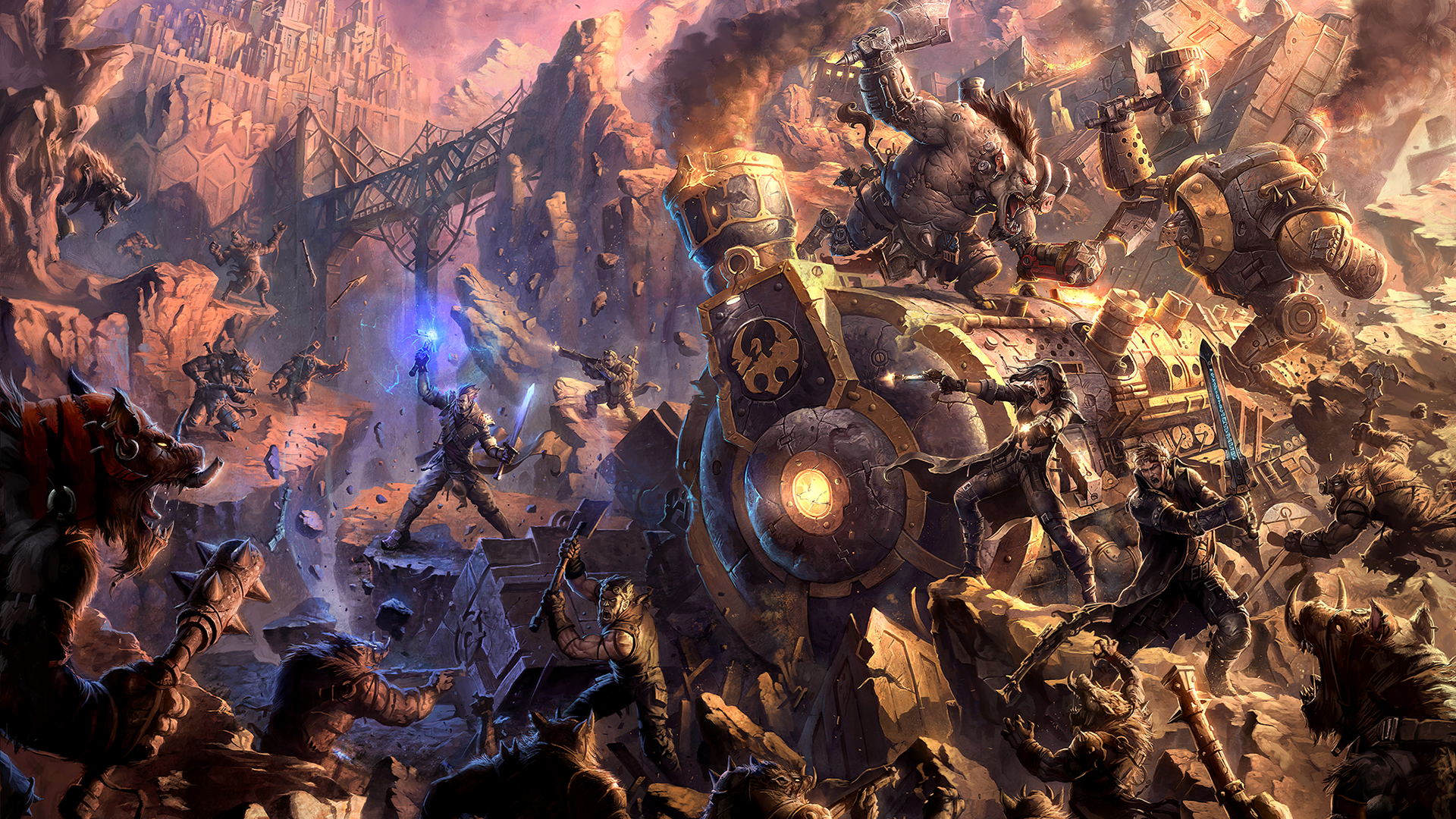
The Orgoth Occupation
Era beginning/end
The blackships of the Orgoth invaders were first spotted by
the Khadoran Empire in the north. The Orgoth’s abominable
fleets were propelled by winds summoned by dark magic,
crewed by scores of indefatigable warriors, and commanded
by warwitches with the power to boil the seas and call
down death from the sky. Unflinching in the face of such a
terrifying enemy, the mighty Tordoran navy—the envy of
western Immoren—sailed out to meet them.
Not a single ship returned.
Rulers of nations throughout the continent began fortifying their borders in an effort to stave off these
seemingly inhuman invaders, who fought tirelessly and
without mercy. Clad in dark armor engraved with howling
faces, the Orgoth were savage in battle and pitiless at any
other time. Attempts at diplomacy were met only with the
return of the emissaries’ severed heads—or the ripping of
their screaming souls from their bodies.
With each kingdom looking first to its own defenses,
unified resistance was impossible, and one by one the nations
of western Immoren fell before the strange artifacts and
terrible Magic of the Orgoth invaders. Warwitches called
down rains of burning blood and filled the sky with green
eldritch flames. Undead monstrosities marched to battle
alongside fierce armored warriors (see Necromancy). Worse yet, the Orgoth
carried with them blackened cages capable of capturing the
souls of the fallen and using them to power their dark magic.
“Your bodies in life are ours,” the Orgoth warlord Kolegzein
IV famously said as the Orgoth lay siege to the great city of
Caspia. “In death, your souls shall also belong to us.”
Some kingdoms held out for decades against the Orgoth
onslaught, but within two centuries of the landing of the first
Orgoth blackships, nearly all of western Immoren was under
Orgoth occupation.
Caspia was the only one of the Thousand Cities to escape
Orgoth conquest. Its walls proved insurmountable even for
the might of the seemingly invulnerable invaders, and its
unique geography made a protracted siege untenable. Unable
to take the city, the Orgoth blockaded it and left it in isolation
for the next four centuries while the rest of western Immoren
suffered under their lash.
Not every other part of the continent fell to the invaders,
however. In 542 BR, the dwarves of Rhul drove off an
Orgoth attack so decisively that the invaders never attempted
another. Similarly, the Orgoth never made any effort to
strike against the heavily forested lands of Ios. No one really
knows why the Iosans were spared the ravages of the Orgoth,
but the invaders’ refusal to attack them contributed to the
mystique of these isolated peoples.
After the Orgoth sank several Cryxian vessels, Toruk
himself was roused for the first time in centuries. The
Dragonfather singlehandedly laid waste to an entire fleet of
Orgoth ships, demonstrating to the invaders that the island
nation of Cryx would prove too potent a foe, even for them.
For those among the human kingdoms on the mainland,
however, the number of those who died as a result of the
Orgoth Occupation was beyond reckoning. For every
thousand slain or sacrificed, many others perished beneath
the lash or were shipped across the sea to the Orgoth
homelands as slaves.
Despite all this, life carried on, even under the cruel yoke of
the Orgoth. Cities such as Corvis were built during this time,
and many Immorese peoples were allowed to continue their
faiths and other practices—even as slaves—so long as those
practices did not interfere with the invaders’ goals.
